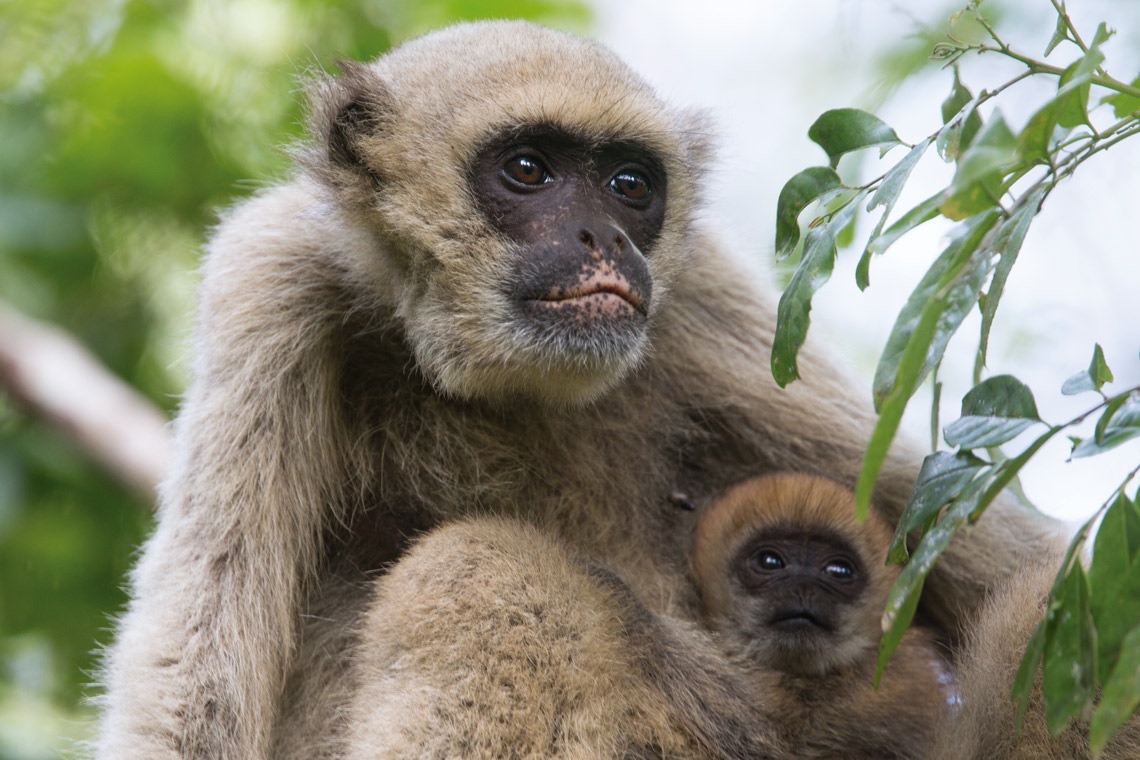The destruction of forests and erasure of traditional peoples is putting the survival of the planet’s primate species at risk. According to an extensive literature review published in the journal Science Advances in August, 30% of the habitat of nonhuman primates is located within indigenous territories, where 71% of their 521 species can be found. About half of the species living on indigenous lands are from the Neotropical realm (Central and South America), while just over a quarter are from the Indomalayan realm and 24% are from Africa. The data, which relate to the period between 2000 and 2015, are part of a study by an international group of scientists from 25 institutions in 13 countries, including Brazil.
A spatial analysis indicated that monkey, ape, and lemur populations are better protected in places where traditional peoples are able to maintain their culture more autonomously in relation to modern society. “There is an overlap, at least a partial one, of most primate species with indigenous territories,” says Ricardo Dobrovolski, an ecologist from the Federal University of Bahia (UFBA) and one of the authors of the article. “The species that live in these areas are less likely to be at risk of extinction, forming enclaves of biodiversity.”

Renato Augusto Martins / Wikimedia CommonsThree primate species from South and Central America: the howler monkey…Renato Augusto Martins / Wikimedia Commons
More than 90% of species whose habitat is not within indigenous lands are endangered. For those that live in the territories of traditional peoples, the proportion drops to 55%. “The more of their range that is in protected areas, the lower the risk of a primate species being classified as endangered or having declining populations,” says Alejandro Estrada of the Biology Institute at the National Autonomous University of Mexico, lead author of the study.
In the American tropics and mainland Africa, 44% of primate species are at risk of extinction to some extent, according to the article. Their conservation status is classified as either vulnerable, endangered, or critically endangered. The situation is much worse in the Indomalayan region and Madagascar, where 88% and 96% of primates respectively are threatened with extinction. “The conservation status of this animal group varies significantly between different regions of the world,” says Paul Garber, a primatologist from the University of Illinois, USA, who also participated in the research.

Dave Curtistufted capuchin…Dave Curtis
How a particular biodiversity-rich landscape is protected also appears to be relevant, the study suggests. In the American tropics, the number of zones with altered vegetation increases the further away they are from the boundaries of indigenous territories. In the Indomalayan realm, however, environmental destruction is observed close to the borders of formally protected areas. In Africa, there was no significant difference, with destroyed areas both outside and inside indigenous lands.
Garber explains that primate species richness is greater in indigenous territories and environmental conservation units, where there are also many monkeys, especially in the American tropics and Indomalaya. “But this is not the case in Africa, which seems to reflect the impacts of historical colonialism. The original peoples of Africa were forced to leave their homelands, which were so rich in biodiversity, before these areas were converted into conservation units,” explains the American primatologist.

Pablo Fernicola / Wikimedia Commonsand northern muriquiPablo Fernicola / Wikimedia Commons
Howler monkeys under pressure
In Brazil, the situation is a little different to other parts of the planet. “A surprisingly small proportion of primate habitat is located on indigenous land (14%),” says primatologist Júlio César Bicca-Marques of the Pontifical Catholic University of Rio Grande do Sul (PUC-RS), another of the paper’s authors. Although the country’s environmental conservation units cover another 34% of primate habitat, more than half of this (52%) is in regions subject to the greatest impact of economic activities.
According to the study, the situation can be exemplified by the range of two Brazilian monkey species: the brown howler (Alouatta guariba), commonly found in the Atlantic Forest; and the black howler (Alouatta caraya), which lives in the southwest and central region of the country. “More than 80% of the areas where these howler monkeys live are outside indigenous lands and conservation units. This means they are highly susceptible to negative human pressure,” says Bicca-Marques. “These two species are also vulnerable to yellow fever virus during wild outbreaks of the disease in the fragmented landscapes they inhabit. Just like many other animals, they are losing more and more of their habitat to agriculture, urbanization, and transport infrastructure.”
Wilson Spironello, a primatologist from the Brazilian National Institute of Amazonian Research (INPA), agrees with the study’s general conclusion, which highlights the importance of indigenous lands to the conservation of primate biodiversity. However, he points out that some peculiarities also need to be taken into account, since certain species have a small range. “The degree of preservation of primate populations will depend on the size of the indigenous territory and the pressure that the animals face from poaching in the reserves,” notes Spironello, who was not involved in the study. “The indigenous peoples themselves use these animals as a food source. The important thing is to analyze them on a case-by-case basis.”
Scientific article
ESTRADA, A. et al. Global importance of Indigenous Peoples, their lands, and knowledge systems for saving the world’s primates from extinction. Science Advances. aug. 10, 2022.


